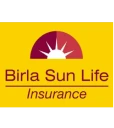LIC’s Accident Benefit Rider
LIC offers a range of life insurance policies as well as riders to its customers. Riders are additional coverage benefits which can be taken with a life insurance plan to increase the scope of coverage. LIC offers five different types of riders and LIC’s Accident Benefit Rider is one among them. Let’s understand the rider in details –
Coverage offered by LIC’s Accident Benefit Rider
Under the coverage provided by LIC’s Accident Benefit Rider, if the life insured dies due to an accident during the coverage term, the rider sum assured would be paid in addition to the death benefit paid under the base plan. Thus, the rider enhances the death benefit in case of accidental death and provides better coverage.
An “accident” should be “a sudden, unforeseen and involuntary event caused by external, visible and violent means,” which causes death within 180 days from the date of the accident.
When to buy LIC’s Accident Benefit Rider
The rider can be bought either when buying the base policy or at any policy anniversary during the coverage tenure. However, if you are buying the rider during the policy term, the premium payment term, after choosing the rider, should continue for at least another 5 years and the insured should not attain 70 years during such premium payment term.
Moreover, the rider coverage is available only for individuals above 18 years of age. If the life insured is a minor, the coverage would start from the policy anniversary which comes after the insured attains 18 years of age.
Premium payable for LIC’s Accident Benefit Rider
The rider comes with a very low and affordable premium which you can easily pay.
Extent of sum assured under LIC’s Accident Benefit Rider
The rider sum assured should be either equal to or less than the sum assured opted for the base policy. There are also limits to the maximum sum assured which can be taken for LIC’s Accident Benefit Rider. The maximum sum assured is calculated as the sum assured of all Accident Benefit Riders taken by the insured under multiple policies. The limits are as follows –
- If LIC’s Jeevan Shiromani Plan is bought, the maximum rider sum assured under all accident benefit riders should not exceed INR 2 crores
- For any other plans which do not include LIC’s Jeevan Shiromani, the maximum rider sum assured is limited to INR 1 crore
LIC’s Accident Benefit Rider-Eligibility
| Parameters | Minimum | Maximum |
|---|---|---|
| Age at entry | 18 years | 65 years |
| Age at maturity | Not applicable | 70 years |
| Sum Assured | Equal to the base policy’s sum assured | INR 1 crore or INR 2 crores depending on the plan |
| Coverage term | Equal to the term of the base policy | |
| Premium payment term | Equal to the premium payment term of the base policy | |
| Premium paying frequency | Same as the premium paying frequency of the base policy | |
LIC’s Accident Benefit Rider-Exclusions
In case of death due to any of the below-mentioned conditions, the rider sum assured would not be paid –
- A self-inflicted injury when the person has knowingly injured himself or attempted suicide, whether it is because of mental imbalance or under intoxication of alcohol, drugs or narcotics etc.
- Participation in civil commotion, riots, war (whether declared or not) rebellion or any adventure sports and activities like hunting, racing, mountaineering, parachuting, parasailing etc.
- While the insured was committing a criminal act such as stealing, mugging, drug dealing or any other anti-social and unlawful activities.
- Due to employment in the army or other armed forces at war. The exclusion, however, does not apply if the insured was not on duty or involved in any rescue operations while battling natural calamities in the country.
- If the death/disability takes place after 180 days of the accident.
Documents Required when Claiming for LIC’s Accident Benefit Rider
To receive a claim under LIC’s Accident Benefit Rider, the following documents are required to be submitted to the insurance company –
- Certified copy of the FIR that has been filed with the Police along with a copy of the police inquest report
- Post mortem report for identifying the cause of death
- A photocopy of the panchnama
- Final verdict by the Sub-Divisional Magistrate
- A newspaper cutting showing the accident being reported in a newspaper
- If the accident took place when the insured was driving, his Driver’s License will also be required.
- If death occured not due to a road accident but for other accidental reasons and there is no police FIR, alternate documentational proofs would be required. These would include statement by an eye witness, an affidavit issued by gram sevaks or government officials, attending physician’s report, etc.
Surrender and paid-up value
LIC’s Accidental Benefit Rider has no surrender value or paid-up value. If the premiums are unpaid, the rider benefit would stop to operate.
Grace Period
For most life insurance plans, a grace period is given to the policyholders. During this period there is no late-fee or fine. However, if the premium is not paid then the policy will lapse. For premiums that are paid monthly the grace period is 15 days, while for premiums paid quarterly, half-yearly and yearly the grace period is for 30 days.
Cooling-Off Period
The cooling period is the period of 15 days that is given to a new policy buyer. During this period if he wishes to return the policy he can do so and the premium amount paid would be returned to him. Depending on the base policy, the policyholder will have a 15 day cooling off period for the rider as well.
FAQ’s
The Accident Benefit Rider covers you against accidents that may prove very serious and stressful. The rider enhances the cover of your vanilla policy and helps you and your family cope up with the crisis in a more controlled way.
No, there is no provision of taking a loan.
As there is no paid-up value, there is also no surrender value that is acquired. Nevertheless, if the policyholder surrenders the insurance policy with which this rider is added, additional rider premium may be returned.
The grace period is the same as for making the basic policy premium payments. For premiums that are paid monthly the grace period is 15 days, while for premiums paid quarterly, half-yearly and yearly the grace period is for 30 days.
Yes, the minimum age at the time of entry is 18 years.






















